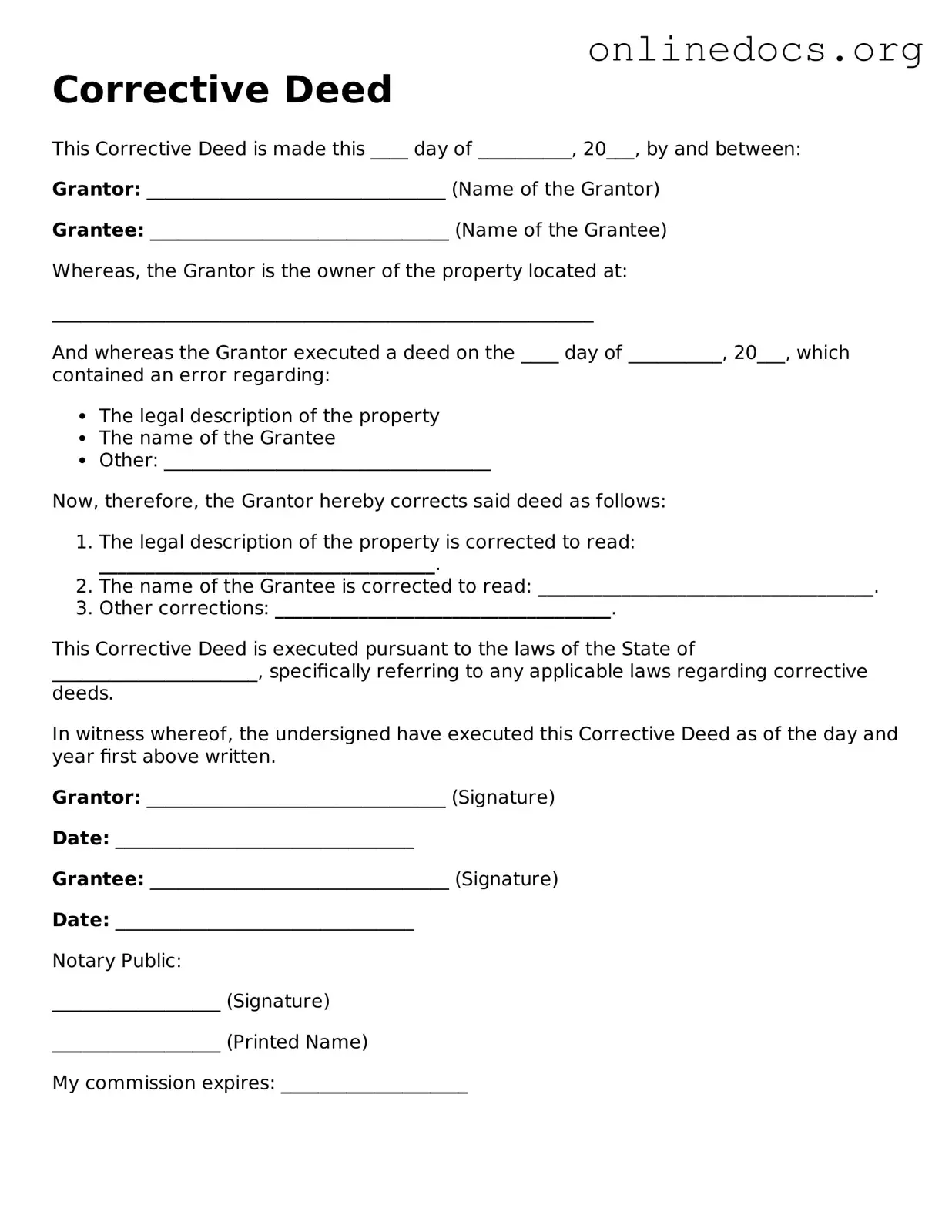The Corrective Deed is often compared to a Quitclaim Deed. Both documents serve to transfer ownership of property, but they differ in their intent and implications. A Quitclaim Deed allows a property owner to transfer their interest in the property without guaranteeing that the title is clear. This means that the recipient may take on risks related to any existing claims or liens. Conversely, a Corrective Deed is specifically used to correct errors in a previously executed deed, ensuring that the title reflects the true ownership and any necessary details are accurate.
Another document similar to the Corrective Deed is the Warranty Deed. Like the Corrective Deed, a Warranty Deed is used to transfer property ownership. However, it provides a stronger guarantee to the buyer. The seller assures that they hold clear title to the property and that there are no undisclosed encumbrances. While both deeds can rectify issues, a Warranty Deed is often preferred by buyers due to the protection it offers against future claims.
The Affidavit of Title is another document that bears resemblance to the Corrective Deed. This affidavit serves as a sworn statement by the seller regarding the status of the property title. It can help clarify any issues before a sale is finalized. While the Corrective Deed specifically addresses errors in a deed, the Affidavit of Title is more about affirming the seller's claims about the title's condition. Both documents aim to provide clarity and assurance in property transactions.
A Special Warranty Deed also shares similarities with the Corrective Deed. This type of deed provides a limited guarantee from the seller regarding the title. Unlike a full Warranty Deed, which covers the entire history of the property, a Special Warranty Deed only protects against issues that arose during the seller's ownership. If a mistake is identified in the deed, a Corrective Deed can be used to amend the records, ensuring that the property’s title is accurately represented moving forward.
In navigating the complexities of property ownership transfers in Georgia, utilizing the correct documentation is essential. For those looking to consolidate or clarify ownership rights, resources like the Georgia Deed form can be invaluable. You can find more information about how to complete this important legal document at georgiapdf.com/deed, ensuring that all necessary details are addressed to prevent any future issues.
Lastly, the Deed of Trust is akin to the Corrective Deed in that both documents involve property interests. A Deed of Trust secures a loan by transferring the property title to a trustee until the debt is paid off. While the purpose of a Deed of Trust is primarily financial, it can also contain provisions that require corrections to be made, similar to the corrective functions of a Corrective Deed. Both documents play crucial roles in maintaining the integrity of property transactions, albeit in different contexts.
